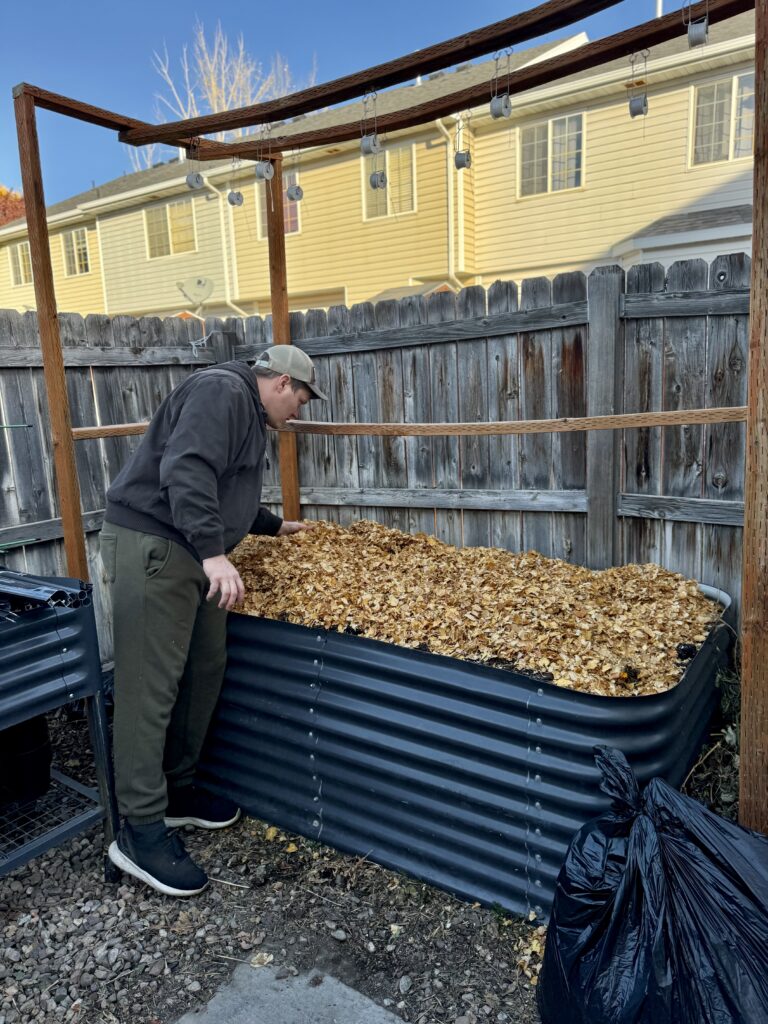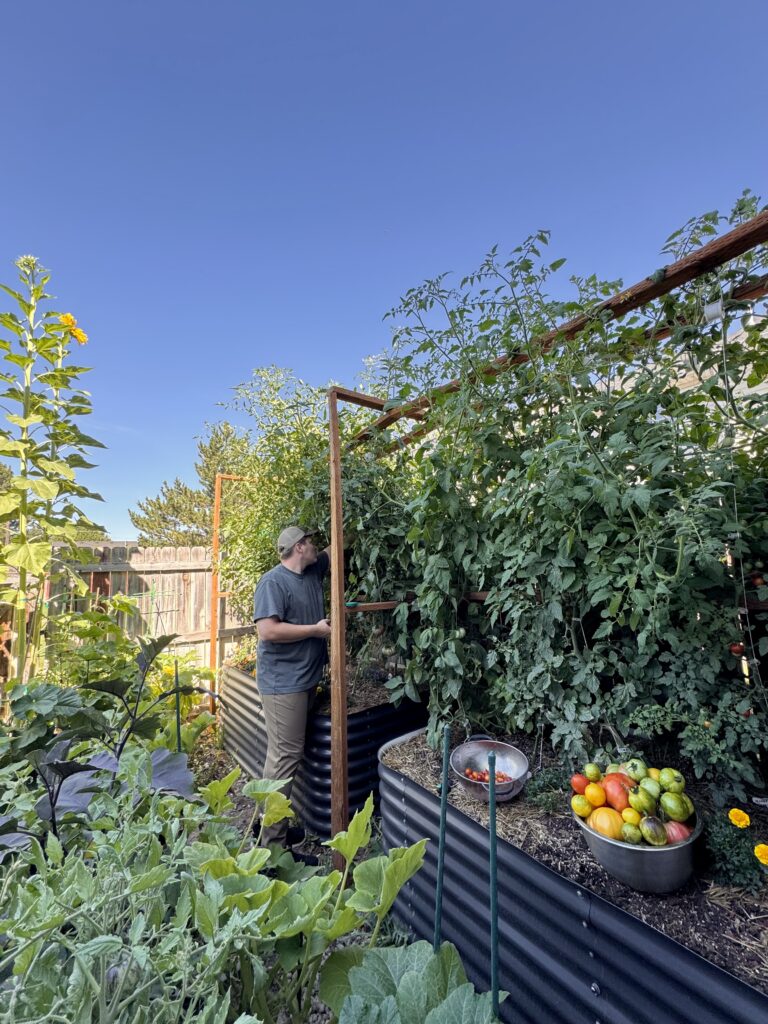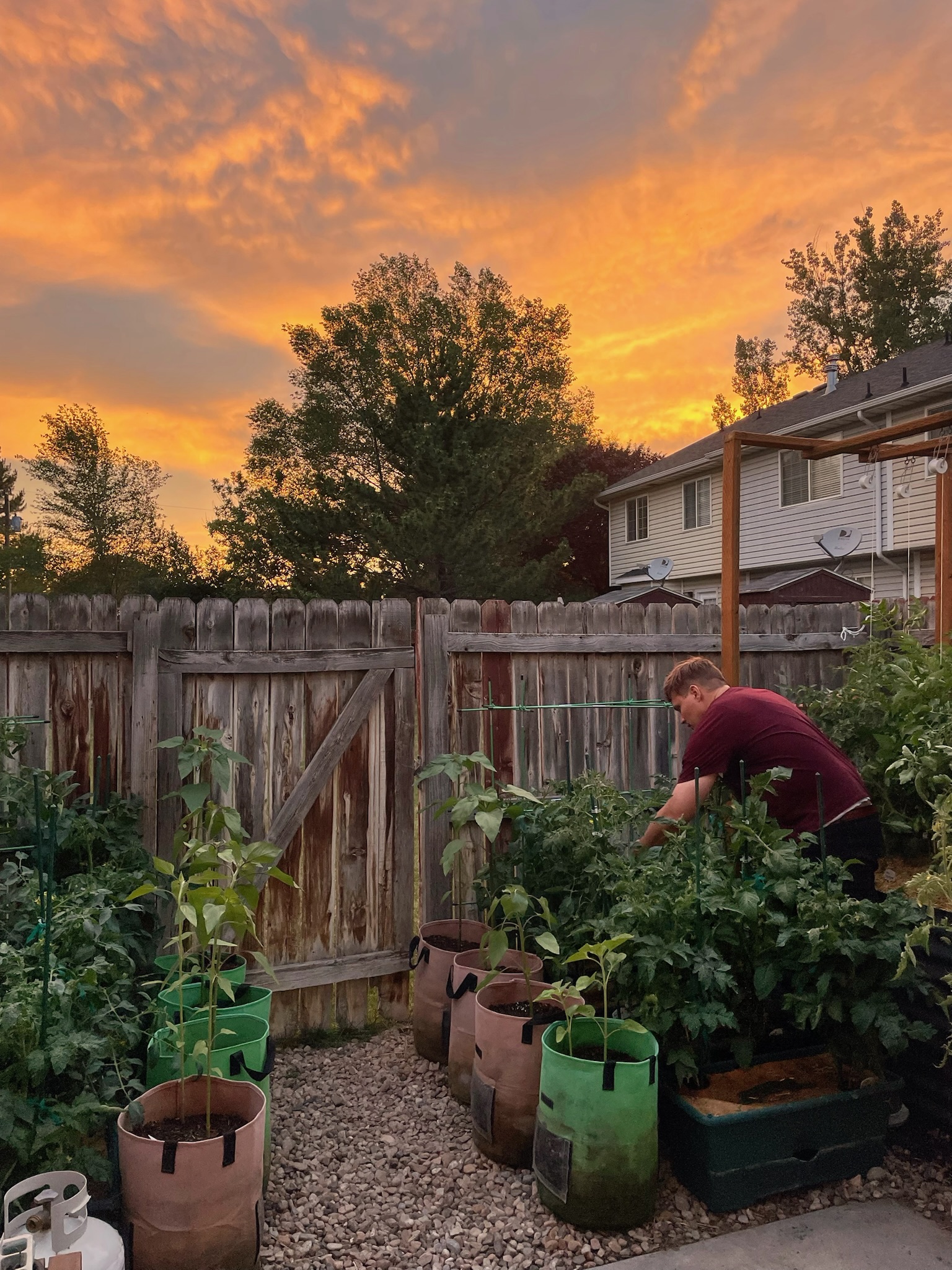Every fall, trees drop one of the most valuable soil-building materials you can find: leaves.


Instead of bagging them up and throwing them away, you can turn them into a nutrient-rich mulch that protects your soil, feeds beneficial microbes, and returns organic matter right where it belongs.
Leaves are nature’s way of recycling nutrients. As they break down, they add organic matter that improves soil structure, boosts microbial life, and enhances moisture retention. A thick layer of shredded leaves can protect your soil from erosion, temperature swings, and nutrient loss through the winter months.
The Best Leaves to Use
Not all leaves decompose at the same rate. Some are soft and crumbly, while others are waxy and slow to break down. Here are some of the best choices for mulch:
- Maple, birch, cherry, ash, and fruit tree leaves decompose quickly and improve soil texture while supporting healthy microbial activity.
- Elm, linden, and mulberry shred easily and create a light, aerated mulch that resists compacting, Excellent for vegetable or perennial beds.
- Poplar and aspen break down fast and add light bulk to the mulch, though they can be mixed with tougher leaves to make the layer last longer.
- Willow decomposes quickly and pairs well with slower leaves such as oak or beech to balance the mix.
- Hickory is slower to decompose but adds calcium and trace minerals that help enrich heavier soils.
- Sycamore produces a fluffy, attractive mulch once shredded and holds up well through winter.
- Alder leaves are a great addition because they contribute nitrogen and help boost soil fertility naturally.

Use in moderation or mix with others:
- Oak and beech have thick, leathery leaves that break down slowly and can acidify the soil if used in large amounts. Mix them with faster-decomposing leaves for balance.
- Walnut leaves should be avoided, since black walnut leaves contain juglone, a compound toxic to many plants such as tomatoes, peppers, and potatoes.
- Pine needles are slightly acidic and slow to break down; use mainly for acid-loving plants such as blueberries or azaleas.
Why You Should Shred the Leaves First
Whole leaves can mat down, block water and air, and smother your soil. Shredding them with a lawn mower, leaf shredder, or even a string trimmer in a garbage bin creates small, fluffy pieces that form a loose, breathable layer.
Shredded leaves break down faster, stay in place better, and integrate into the soil more easily. Whole leaves are fine around trees and shrubs but not ideal for delicate garden beds.

Shredded Leaves vs. Grass Clippings vs. Straw as Garden Mulch:
| Mulch Type | Benefits | Drawbacks | Best Uses |
| Shredded Leaves | Free, carbon-rich, improves structure, attracts worms and microbes | Needs shredding, may blow away when dry | Vegetable beds, perennials, around trees |
| Grass Clippings | High in nitrogen, feeds soil quickly | Can become slimy if applied thick | Thin layers in vegetable beds, compost booster |
| Straw | Insulates well, suppresses weeds, long-lasting | May contain weed seeds, slower to decompose | Garlic beds, strawberries, and overwintering crops |
For the best results, try combining shredded leaves with grass clippings. The carbon from leaves balances the nitrogen in grass, creating a mulch that breaks down beautifully and feeds the soil over time.
Shredded leaves last longer, improve soil structure, and resist matting, making them ideal for trees and perennial beds. Grass clippings add quick nitrogen for fast-growing annuals and vegetables but break down faster.
The best mix? Combine 2–3 parts shredded leaves with 1 part grass clippings for a balanced, breathable mulch that enriches soil without matting or odor.

Nutrients and Microbes in Leaf Mulch
Leaves are full of minerals that trees draw from deep in the soil. When they decompose, they release these nutrients back into your garden, including calcium, magnesium, potassium, and trace elements such as copper, zinc, and iron.
Even more important are the microbial benefits. Shredded leaves create an ideal environment for beneficial bacteria, fungi, and earthworms. As these organisms digest the carbon-rich material, they form humus, which is the dark, fertile substance that gives soil its life. This microbial activity increases nutrient availability, supports healthy root growth, and helps plants access minerals naturally.
A layer of shredded leaves acts like a protective blanket over the soil. It shields microbes from harsh conditions that can disrupt their activity.
- Temperature Protection: Mulch prevents extreme soil temperature changes. It keeps soil cooler in summer and prevents deep freezing in winter, allowing microbial life to remain active longer.
- Moisture Regulation: Consistent moisture is essential for microbial life. Mulch helps retain water by reducing evaporation, keeping the top layer of soil damp and hospitable.
- Protection from Sunlight: Direct sunlight can dry and overheat the soil, damaging beneficial bacteria and fungi. Leaf mulch blocks sunlight, preserving the dark, cool environment they need.
- Steady Food Supply: As leaves slowly break down, they provide a continuous source of carbon that keeps microbial populations thriving year-round.
By maintaining this stable, nutrient-rich microclimate, leaf mulch supports the invisible ecosystem beneath your plants and helps build long-term soil fertility.

Making Leaf Mold for Even Richer Soil
If you have extra leaves, consider turning them into leaf mold, a soft, earthy material similar to forest humus. Unlike compost, which is high in nitrogen, leaf mold is mostly decomposed organic matter that improves soil structure and water-holding capacity.
To make it:
- Shred the leaves first.
- Pile them in a bin or corner of your yard.
- Moisten them lightly so they feel like a wrung-out sponge.
- Let them sit for six to twelve months, turning occasionally.
You’ll end up with dark, crumbly material that makes an excellent soil conditioner or seed-starting additive.
Tips and Tricks for Using Leaf Mulch
- Apply a layer about two to three inches thick.
- Water after spreading to help the leaves settle.
- Keep the mulch a few inches away from stems or trunks to prevent rot.
- Combine with compost or manure for faster nutrient release.
- Use shredded leaves in pathways or between raised beds to suppress weeds and enrich the soil as they decompose.
Each fall, trees give us the gift of organic matter, completely free and abundantly available. With just a little effort, you can shred them and create your own mulch to set the stage for a thriving garden next spring. Best of luck!
Thanks for reading along, guys!
If you enjoyed this blog post, be sure to check out my other gardening blog posts:
- How to Start a Garden on a Budget for Under $100
- Essential and Nice-to-Have Garden Products for Your Perfect Setup
- My Garden Setup: 3 Best Garden Containers for Every Gardener
- Understanding Garden Light and Shade: A Simple Guide
- How to Build a Homemade Trellis Using Cattle Panel
Be sure to follow me on social media for daily content and instructional videos about gardening!








0 Comments